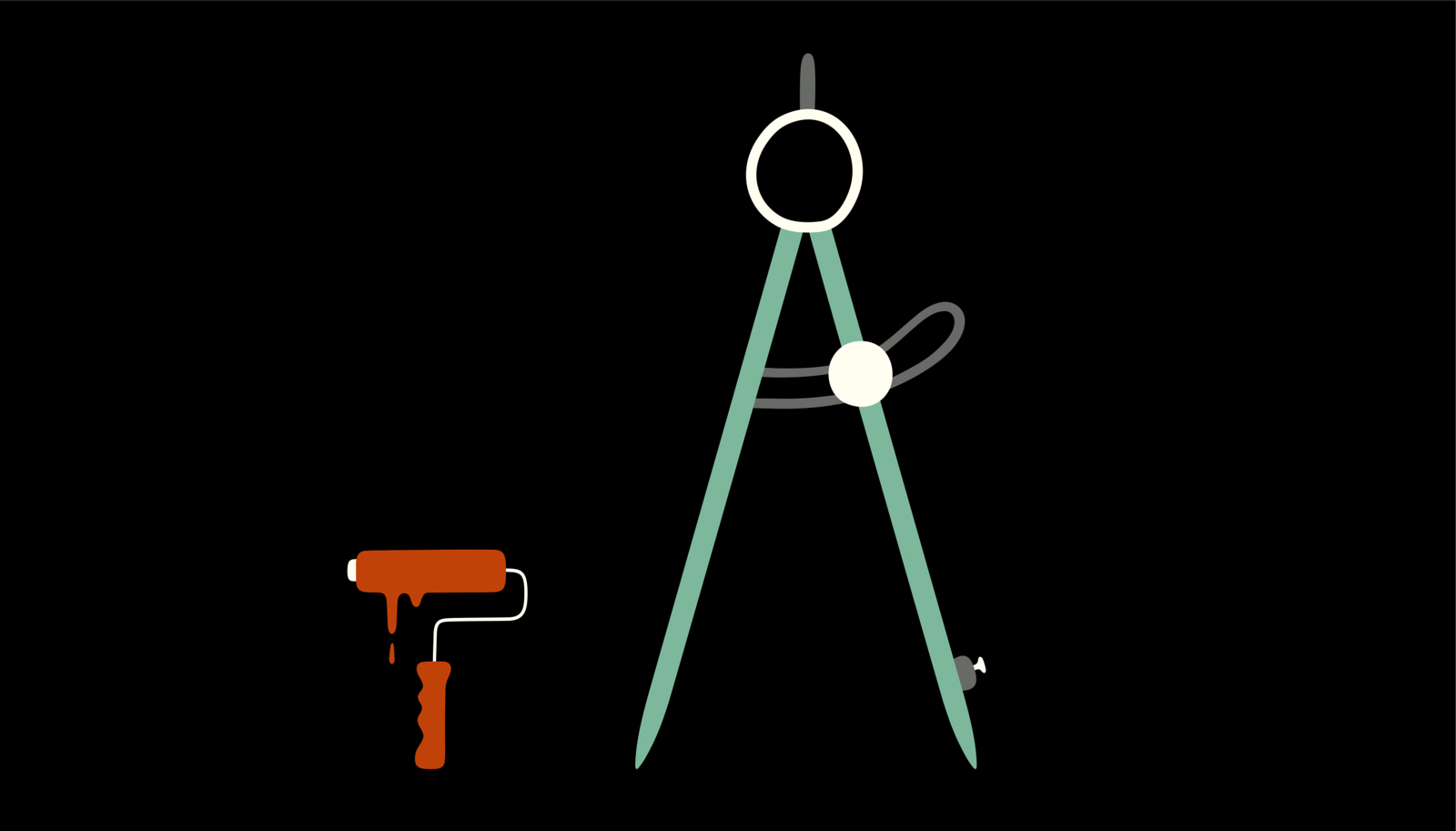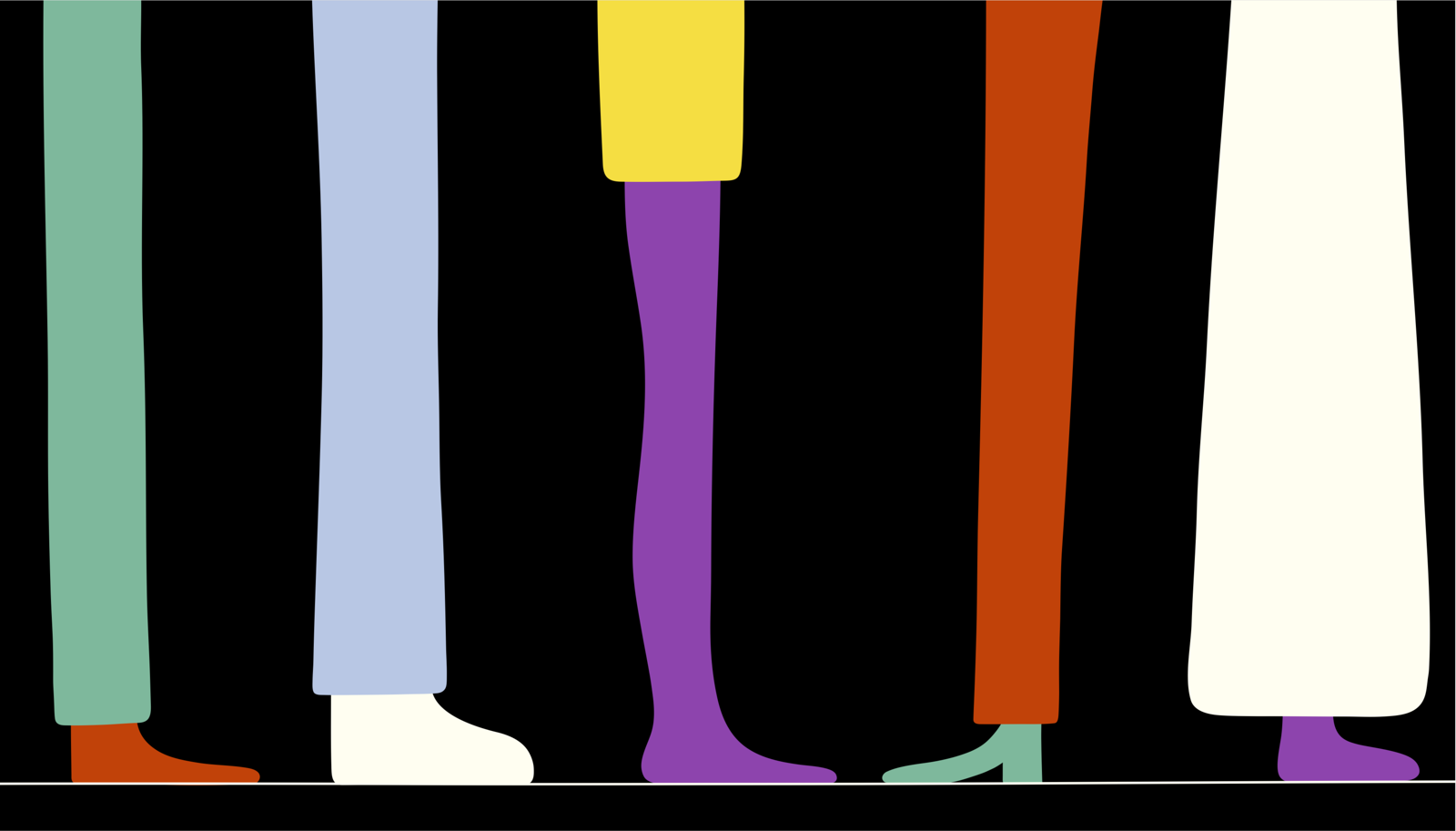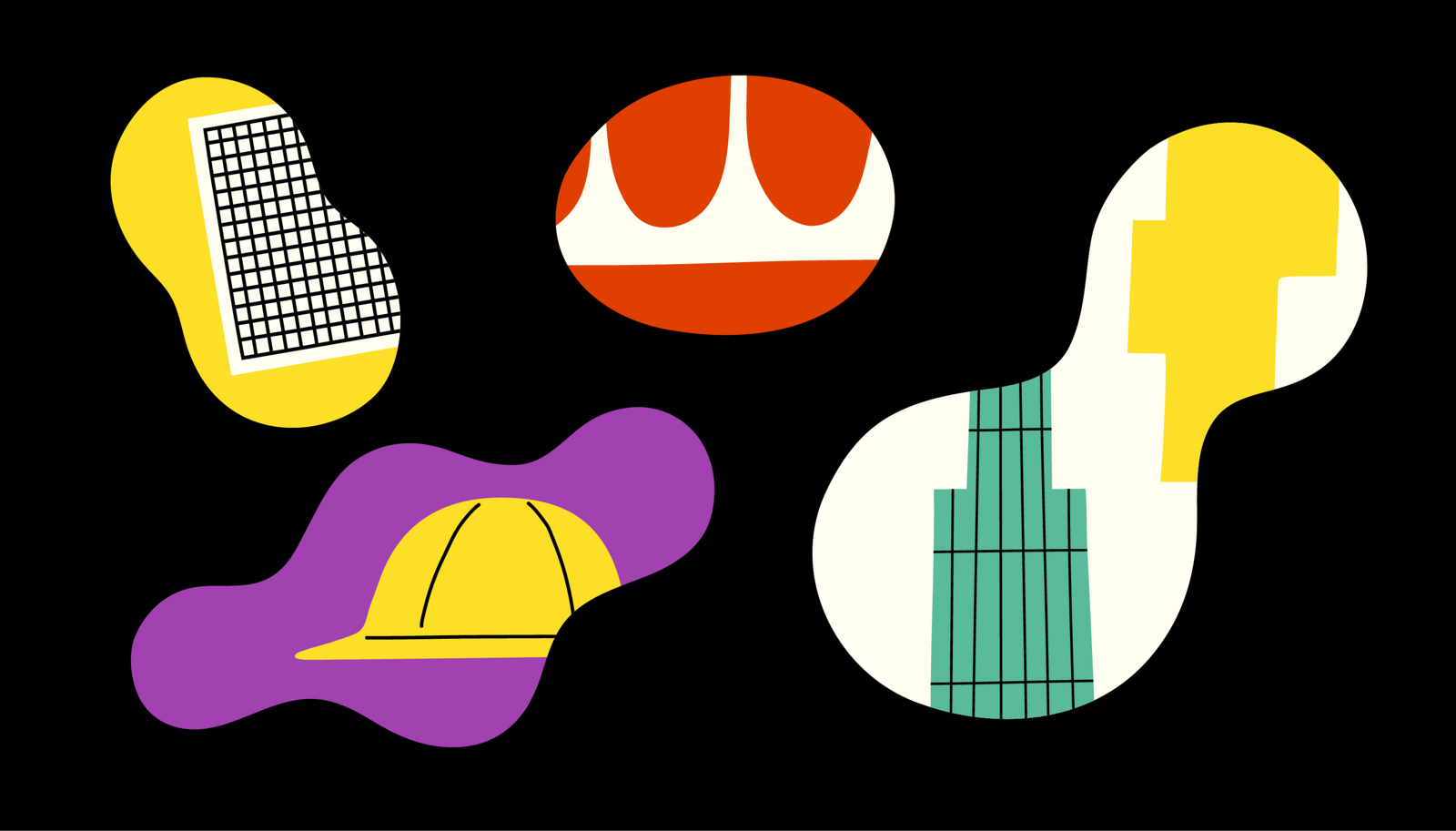For visitors, the audio guide is a crucial point of access to the ideas and imaginations behind an exhibition. It is a friendly voice, arriving somewhere near the amygdala, that tells us: this place, these things—they can also be for you. Listening to, or engaging with an audio guide does not require the same investment as reading catalogues, panels of text, captions, or labels. The experience of an audio guide is, first and foremost, a solitary one. But it is an experience that can be shared. The listener controls its pace and duration, dedicating as much or as little attention as they choose. In this way, it is also not the same as a guided tour. While a tour led by a person is a social affair, the electronic tour is—at most—a parasocial experience. The audio guide gives and demands little in return. We cannot upset it if we want to skim over one part or another, or talk to our friends in the middle of an explanation. It invites distraction. It accompanies without directing.
The audio guide can be all of the above in part because it has largely been left alone by the highest tiers of curatorship. As time has passed, it has become something barely considered as interpretation, relegated to the realm of visitor experience. And yet the audio guide has been a pioneer of mediated exhibition experiences, easing visitors into often challenging environments. It is a quiet success story that has, for a long time, been comfortable in its role. For this, and for all the awkwardly beautiful devices that it has lived within, the audio guide deserves the recognition that it has never asked for.
What follows is the briefest history of the audio guide. Among the earliest versions was the type developed by Willem Sandberg for the Stedelijk Museum in Amsterdam during the 1950s, which delivered guided tours in total synchronicity to visitors via short-wave radio broadcast. Each listener would follow the lecture, as if guided by an invisible force, individually but all at once. A seismic experiential shift was the introduction of handheld digital devices, preloaded with content administered on demand, which allows visitors to choose the pace, itinerary, and duration of a tour. This new format inspired a great deal of experimentation, focused particularly on hardware. From buttons, touch pads, and game consoles to location-tracking and line of sight-aware systems, its tactile agency opened up a portal for a mainstream public. On-demand, didactic, portable content became scrollable, pauseable, and skippable. And such are the comforts leading to its success: being given agency/autonomy and room/space.
Audio guide devices have seen the introduction of more complex interfaces that provide access to more information, buttons, and screens. This has led to increasingly specific museum hardware that tends not to exist anywhere else. At the same time, however, museums and museum professionals have embraced the opportunity provided by the smartphone – if everyone carries a computer in their pockets, then the audio guide might as well be an app. But with this shift, we can see a positive aspect to the odd little handsets that, previously unnoticed: the ever-rarer joy of hard-pressing large rubber buttons; the focus that a content-specific device affords in a time when seemingly everything happens inside our smartphones. Who wants their time spent in an exhibition to be mediated through their smartphone, after all?
Imagining the identity of the museum as being entirely separate from its architecture is a freeing thought. It’s also a rather fitting one at a time in which institutions appear to be taking on the challenge of having both a fully-fledged online presence while also integrating immersive media. Both ideas question the role of the museum building itself. Historically, such buildings have had to fulfil the paradox of being at once a backdrop (a vessel for content) and a foreground (an identity bearer for the institution). In decades past there has been an increasing concern with the latter, leading to architectural acrobatics not seen before.
The Guggenheim Bilbao is a museum building renowned for its effect in the city and not so much for its collection. Frank Gehry’s design (1997) is often single-handedly credited for the regeneration of the industrial port area of Bilbao which, reportedly, made the city world-famous and gave birth to the term “Bilbao Effect,” the idea that a single cultural entity can entirely redefine the prospects of a place. The effect of tourism in the region cannot be understated, and the museum itself embraces the fact that its glistening architecture has become the main attractor.1 As such, it offers an audio tour of the building. In Andrea Fraser’s Little Frank and His Carp (2001), the artist enters the building, picks up one of the large-buttoned audio guides, and hears:
Isn’t this a wonderful place? It’s uplifting! It’s like a Gothic cathedral, you can see your soul rise up to the building around you…
In the great museums of previous ages, rooms link from one to another and you must visit them all, one after another. Sometimes it can feel as if there is no escape, but here there is an escape, this space [the atrium] to which you can return after every gallery to refresh the spirit before your next encounter with the demands of contemporary art.
This building recognizes that modern art is demanding, complicated, bewildering, and the museum tries to make you feel at home so that you can relax and absorb what you see more easily.
According to the guide both Gehry and the Guggenheim are heroes, here not just to save Bilbao from its industrial heritage, but also to save us all from modern art. The guide continues:
These curves are gentle but in their huge scale, powerfully sensual. You’ll see people going up to the walls and stroking them. You might feel the desire to do so yourself. These curving surfaces have a direct appeal that has nothing to do with age, class, or education…
Paradoxically these sensual curves are being created by computer technology. Let’s take a closer look at one of the stone clad pillars in the space…
Go right up to it. This pilar is clad in panels of limestone. Run your hand over them. Squint along the surface. Feel how smooth it is.
Throughout the tour Fraser follows the instructions given by the audio guide, leading her to a sensual encounter with the stone surfaces of the building that shocks both visitors and staff. Little Frank and His Carp speaks about the museum as a starchitectural ride, it considers identity in and of contemporary cultural institutions, pervasive macho overtones that are common in cultural critique, and how all of these things can be mediated through an audio tour.2 As museums take on the inescapable challenges of developing their own online presences and integrating immersive media, Gehry’s “carp” begins to crumble. In turn, the idea of the museum existing as just a small controller appears to be rather fitting. The audio guide, then, is a starting point to consider how new forms of media might embody institutional identity.
Entity and Interface
The online presence of a museum, or the “Remote Museum,” and the integration of immersive media, or the “Augmented Museum,” are not opposed, nor are they mutually exclusive. But they are distinguishable in how they relate to a museum building. And the paradox of identity presented earlier—the museum building being both a backdrop, or a vessel for content, and foreground, or an identity bearer for the institution—applies differently to both. But the Augmented and Remote Museums also have the possibility of becoming one and the same thing, and in so doing, have the potential to take one the role now fulfilled by physical buildings and replace them altogether.
The Augmented Museum exists in, around, and over the physical building. It drapes a media blanket over the very site of the institution. The Augmented Museum already exists in every museum in the form of leaflets, signage, museum hosts and staff, and of course, in the audio guide. The museum website, or the Remote Museum, can also be included in this list. The Augmented Museum is not a vessel for artworks, but rather a vessel for information about artworks. It provides visitors access to the institution’s perspective through various formats (text, audio, visual, conversation, and so on), thus presenting the museum outwards. While the Augmented Museum exists in tandem with the physical building, we could also imagine it as a layer, a vector, or a dimension of the Remote Museum.
The identity of a museum lies not in the artworks themselves or the building per se, but in its curation of content. This is no different to saying the museum is the audio guide, which, in turn, suggests that the Augmented Museum can be the identity bearer of the institution. In this way, the museum could be freed from its building and be fully contained within just two flexible and dynamic elements: the interface through which we access the content, and the entity that delivers it. When we consider the possibilities of immersive media, such as the reproduction of gestures, posture, eye contact, and our positioning in relationship to one another, an expanded understanding of the audio guide could take on new dimensions that provide greater degrees of detail and deeper forms of interactivity and engagement. What form could the audio guide take on in the context of immersive media? What could its interface and entity be?
As more layers of communication such as body language and facial expressions are recorded and reproduced on-demand, the point-cloud of a 3D-scanned curators tour could be reproduced and accompany us throughout a visit. While this entity could be understood as a continuation in the tradition of pre-recorded guides, it becomes more challenging when we consider forms of interaction that allow visitors to control the guide. While the act of fast forwarding an audio or video recording has managed to stay outside the uncanny valley, scrolling a hologram might fall deep into it. Stylized characters or abstract rigged forms that can play three-dimensional recordings of body language, facial expressions, and voice would be more comfortable to engage with than a lifelike avatar. They would also lend themselves more easily to embodying institutional identity without having to resort to the likes of branded t-shirts. They could be unique to each institution, event, or exhibition, and, personalized to each visitor. A visitor could always be greeted by the same character, and if sharing the visit with a friend, it might be possible to look at two different versions of the same entity delivering the same information. We could converse with them on their own pre-recorded terms, or tap into their intelligence and question their discourse. And by interacting in this way, we could build a relationship with the museum over time—one that is not linked to a building, but to a perspective, and to the way in which we meet an exhibition.
In parallel with the entity that supports these audio-body-facial recordings is the interface. We could deliver voice commands or wave our hands in the air in order to skip, scroll, or pause. That said, visitors would likely feel most comfortable when holding some kind of a “tool” in their hands, providing a haptic anchor. This should be a specific piece of hardware: a peculiar smart-object that enables us to interface with the institution. While in the age of the touchscreen, content-specific hardware interfaces are in decline, immersive media is bringing back the design of task-specific input devices, only now in their virtual form. Virtual versions of gamepads, joysticks, and trackballs are almost as engaging as their physical counterparts. Pixel Ripped 1989 (2018), a game by ARVORE, sits among the most interesting examples of said experiences.3 Google Earth VR also offers an experience along these lines, operated in a way that resembles the 1995 hardware interface developed by Terra Vision from ART+COM. In becoming skeuomorphs, these devices highlight the experiential essence of their physical counterparts. They reveal how much of the experience lies in our interaction with the interface and how a deeper connection is formed when our hands are involved.
The museum, now a thing that we can hold in our hands, can transform from a building into an object, and in so doing, come closer to us in a way that is natural. We then might finally be able to appreciate the museum as a tool, and not as sensuous architectural surfaces we are meant to awkwardly embrace. The museum of tomorrow is the object and interface that engages us both visually and haptically through immersive and embodied means, all in the tradition of the odd little audio guide that has quietly taught us so much.
Solicited: Proposals is a project initiated by ArkDes and e-flux Architecture.

















